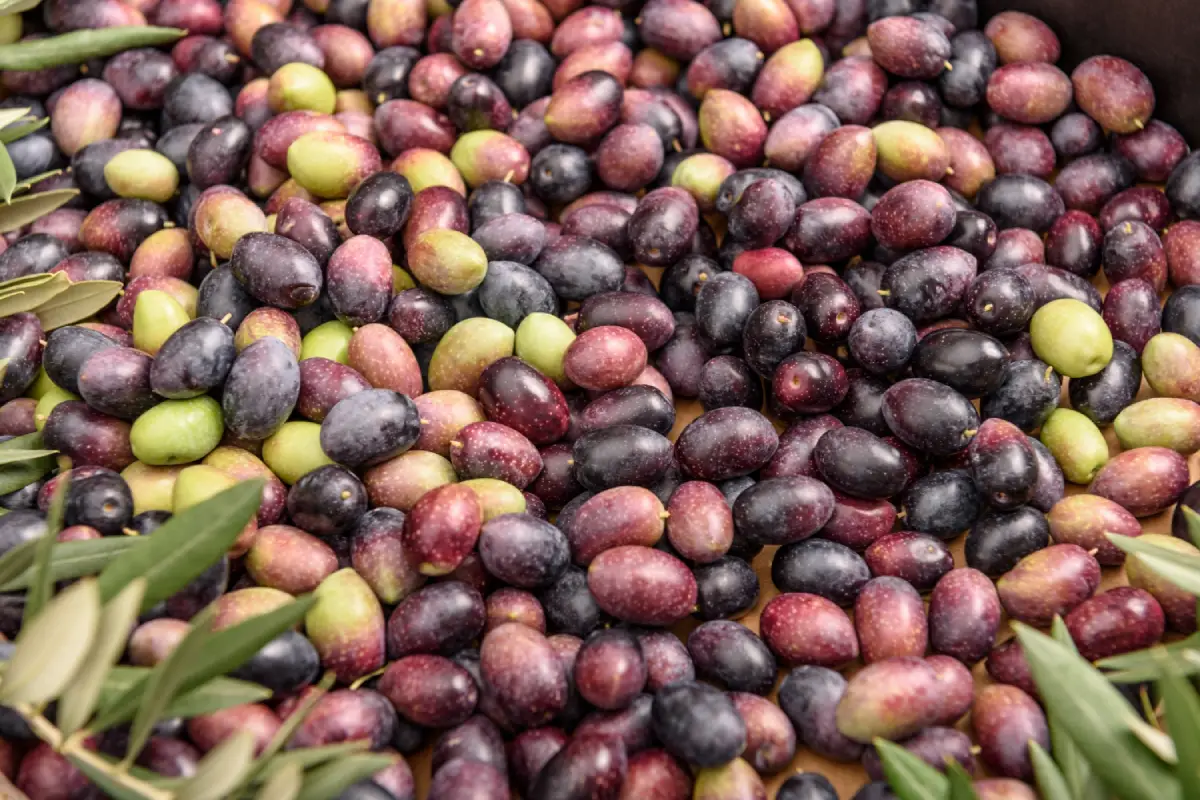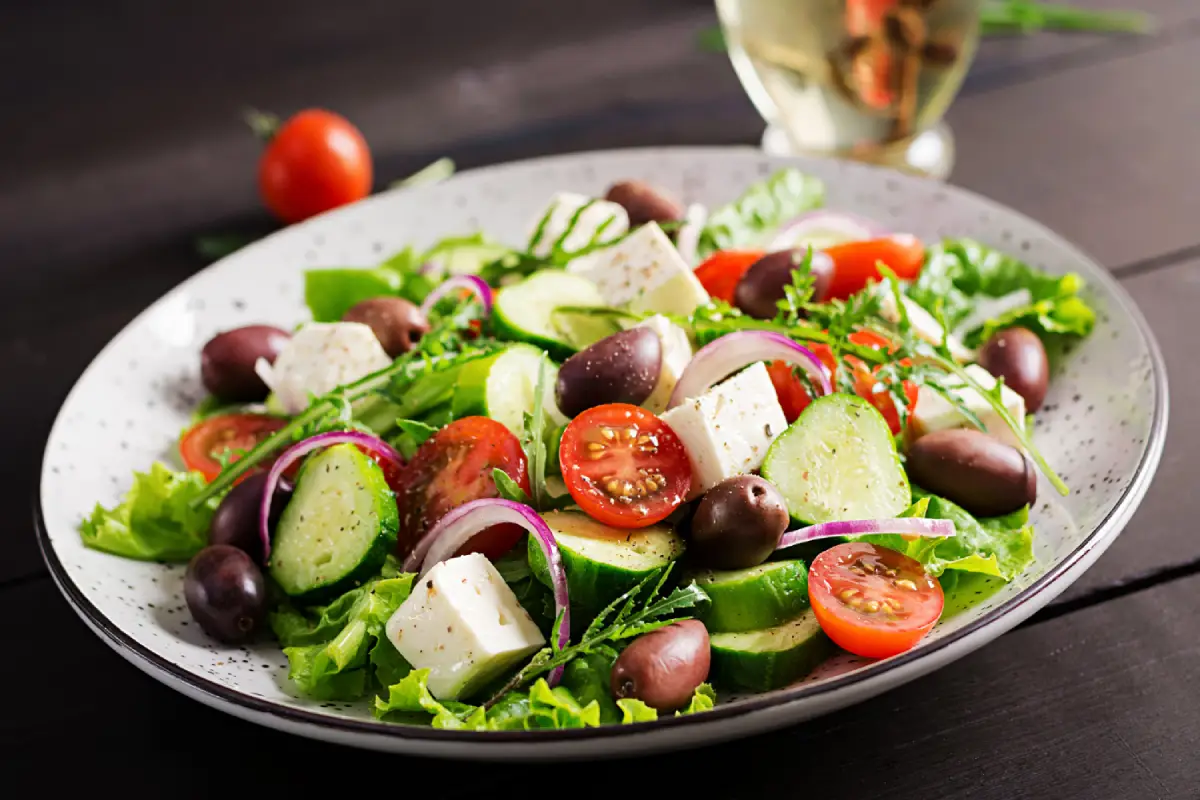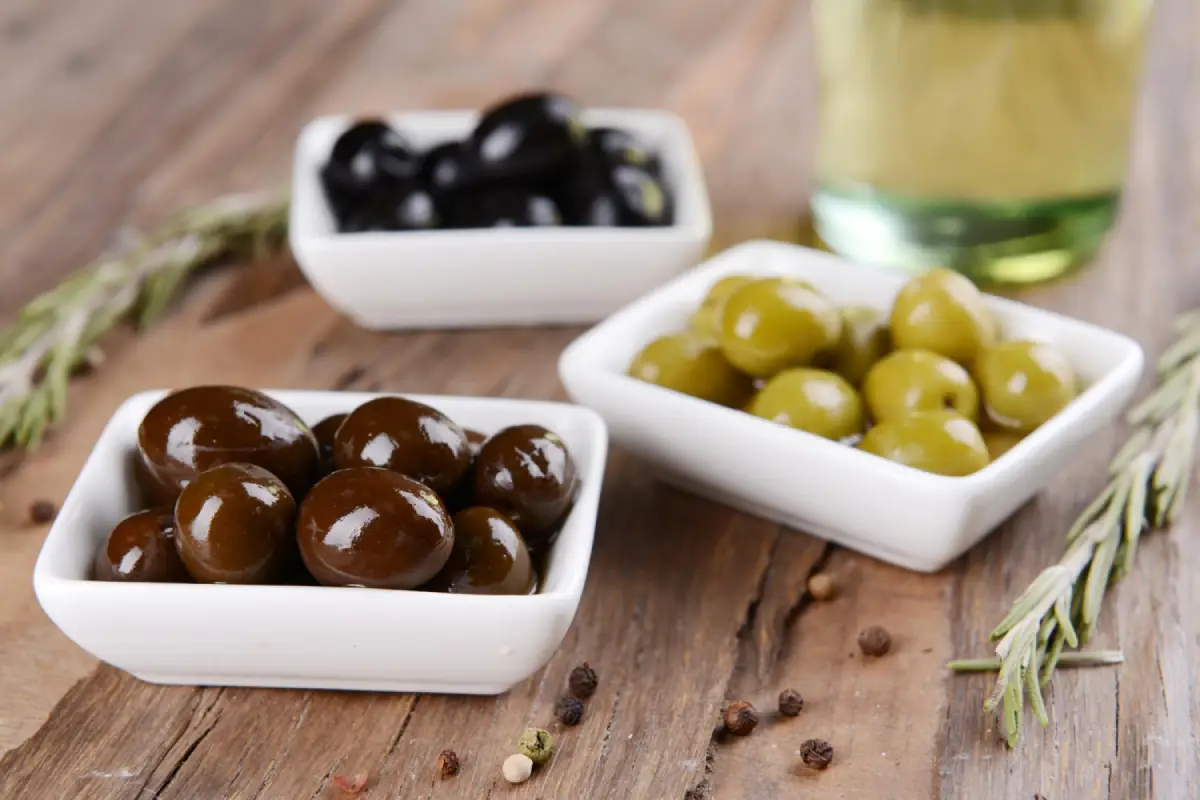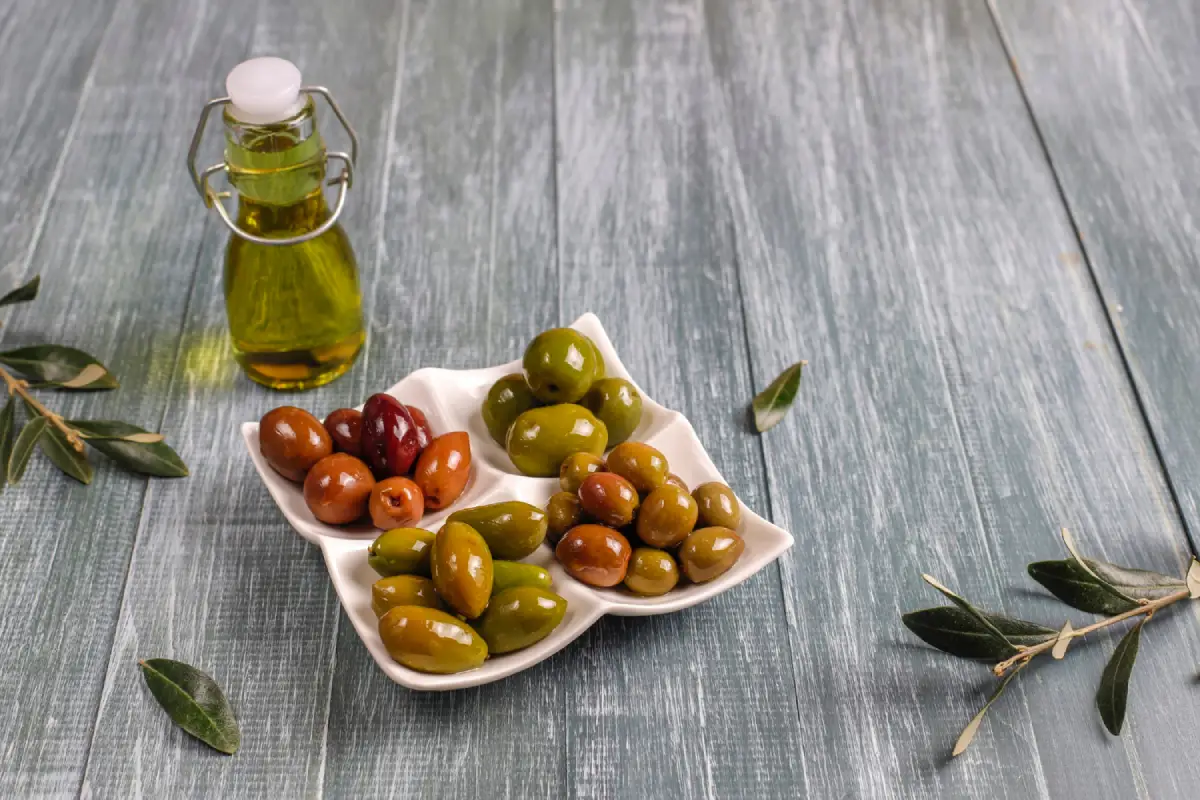Welcome to the world of Kalamata olives, renowned for their unique benefits and distinct place in Mediterranean cuisine. These dark, flavorful olives are not just a culinary staple in Greek dishes; they’re a treasure trove of rich flavors and health advantages. In this article, we’ll explore the myriad reasons why Kalamata olives are a cherished ingredient globally.
Join us on this flavorful journey. Discover why Kalamata olives are more than just an ingredient – they’re a celebration of taste and tradition.
The Rich History and Cultural Significance of Kalamata Olives
Origins in Greek History
Kalamata olives have deep roots in Greek history, originating from the city of Kalamata. For centuries, these olives have been a vital part of Greek culture. The ancient Greeks not only cherished them as food but also revered their medicinal and spiritual qualities. Consequently, the history of these olives is deeply intertwined with Greek traditions and mythology, elevating them beyond mere culinary ingredients.
A Symbol of Greek Heritage
In contemporary times, Kalamata olives continue to symbolize Greek heritage. They are an essential component in many traditional Greek dishes, perfectly capturing the essence of Mediterranean cuisine. Furthermore, the annual olive harvest transcends agriculture; it’s a cultural celebration that unites communities. This enduring tradition highlights the olive’s ongoing significance in modern Greek society.
Cultural Impact Beyond Greece
Additionally, the popularity of Kalamata olives extends well beyond Greece, significantly influencing culinary practices around the world. Their unique taste and versatility have made them a favored ingredient in international cuisines. As a result, this global presence underscores the cultural impact of Kalamata olives, allowing them to transcend their origins and become a worldwide culinary icon.
Recipes Featuring Kalamata Olives
Classic Greek Salad
Firstly, the classic Greek salad is an iconic dish that showcases Kalamata olives. This refreshing salad combines ripe tomatoes, crisp cucumbers, red onions, and feta cheese, all unified by a generous helping of Kalamata olives. Drizzled with olive oil and sprinkled with oregano, this simple yet flavorful dish is a staple of the Mediterranean diet.
Kalamata Olive Tapenade
Additionally, Kalamata olive tapenade offers a versatile and flavorful spread that can elevate a variety of dishes. By blending Kalamata olives with capers, anchovies, garlic, lemon juice, and olive oil, you get a rich, savory paste. It’s perfect as a bread spread, a topping for grilled meats, or a flavorful addition to sandwiches.
Mediterranean Pasta with Kalamata Olives
Moreover, Kalamata olives shine in pasta dishes. Combine them with cooked pasta, cherry tomatoes, spinach, and garlic-infused olive oil for a quick, delicious meal. Discover more culinary ideas where Kalamata olives also shine in pasta dishes on this popular cooking site. The olives add a depth of flavor that perfectly complements the freshness of the vegetables and the richness of the oil.
Roasted Chicken with Kalamata Olives
Lastly, for a heartier option, try roasted chicken accented with Kalamata olives. The olives add a burst of flavor to the savory chicken, creating a delightful contrast. Pair this with roasted vegetables and a sprinkle of herbs for a complete, satisfying meal.
Culinary Uses and Pairings of Kalamata Olives
Versatility in the Kitchen
Kalamata olives are a versatile ingredient that can enhance a wide range of dishes. Their rich, fruity flavor and meaty texture make them perfect for both savory and sweet recipes. From traditional Greek salads to modern fusion dishes, Kalamata olives add depth and complexity to every meal. Furthermore, their distinct taste pairs exceptionally well with various cheeses, wines, and meats.
Kalamata Olives in Mediterranean Cuisine
Central to Mediterranean cooking, Kalamata olives are more than just a side dish. In this cuisine, they often play a starring role. They’re key in recipes like Greek salad, tapenade, and pasta dishes. Moreover, their robust flavor complements the fresh and vibrant ingredients typical of Mediterranean recipes, embodying the region’s culinary spirit.
Global Culinary Influence
Beyond Mediterranean borders, Kalamata olives have made a significant mark on global cuisine. Chefs worldwide incorporate these olives into a myriad of dishes, experimenting with their unique flavor profile. Whether it’s in appetizers, main courses, or even in innovative desserts, Kalamata olives provide a touch of Greek tradition with a contemporary twist.
Nutritional Profile of Kalamata Olives
Rich Nutritional Content
Kalamata olives are not only flavorful but also packed with nutrients. They are a good source of vitamins, minerals, and healthy fats. Specifically, they’re rich in Vitamin E, iron, calcium, and antioxidants. These nutrients contribute to various health benefits, making Kalamata olives a nutritious choice for a balanced diet.
Kalamata Olives Health Benefits
The health benefits of Kalamata olives are significant. Their high antioxidant content aids in fighting free radicals, potentially reducing the risk of chronic diseases. For more details, explore on this nutrition-focused website. The presence of monounsaturated fats promotes heart health, while their anti-inflammatory properties can benefit overall wellness. Additionally, Kalamata olives are known to support digestive health, thanks to their dietary fiber content.
Diet Compatibility
Kalamata olives are compatible with various diets, including Mediterranean, Keto, and vegetarian. Their low carbohydrate content makes them suitable for low-carb diets like Keto. At the same time, their plant-based origin fits well within vegetarian and vegan dietary patterns. Their versatility in diet compatibility underscores their appeal as a healthy, inclusive food choice.
Comparison of Kalamata Olives with Other Olive Varieties
Distinctive Taste and Texture
Kalamata olives are renowned for their distinctive taste and texture, setting them apart from other varieties. They have a rich, fruity flavor with a hint of smokiness, unlike the more bitter or briny taste of some other types. In terms of texture, Kalamata olives are meatier and less fibrous, offering a satisfying bite that is both firm and tender.
Appearance and Size
Visually, Kalamata olives are easily distinguishable. They are larger, almond-shaped, and have a deep purple to almost black color. This contrasts with the smaller size and green to light brown hues of many other olive varieties. The unique appearance of Kalamata olives not only adds aesthetic appeal to dishes but also makes them a standout ingredient in terms of presentation.
Culinary Applications
While all olives have their place in cooking, Kalamata olives offer specific culinary advantages. Their robust flavor makes them ideal for recipes where olives are the centerpiece, such as in tapenades or as part of cheese platters. In contrast, other olive varieties might be better suited as subtle flavor enhancers in dishes like stews or sauces.
Nutritional Differences
There are also nutritional differences to consider. While all olives are healthy, Kalamata olives have a higher concentration of certain nutrients like Vitamin E and antioxidants. However, it’s important to note that the way olives are processed and preserved can affect their nutritional value, regardless of the variety.
Production and Processing Techniques of Kalamata Olives
Embracing Traditional Growing Methods
In the Peloponnese region of Greece, farmers grow Kalamata olives using time-honored methods. Learn how many growers in the Peloponnese region adopt sustainable methods on this agricultural resource. These traditional techniques focus on natural growth and minimal intervention. This approach ensures the olives develop their distinct flavor profile to its fullest.
Careful Harvesting Practices
Farmers hand-pick Kalamata olives to prevent bruising and ensure quality. They harvest these olives from late fall to early winter, choosing the perfect time to balance flavor and texture. This labor-intensive process is crucial for maintaining the olives’ premium quality.
Natural Curing and Fermentation
Following harvest, the olives go through a unique curing and fermentation process. Artisans cure them in natural brine, enhancing their flavor gently. They meticulously monitor the fermentation to develop the olives’ signature fruity and slightly smoky taste.
Stringent Quality Control and Packaging
Every step from tree to table involves stringent quality control. Producers oversee each phase to guarantee the highest quality. Finally, they pack the olives, often in their natural brine, to preserve freshness and flavor.
Taste Profile and Sensory Experience of Kalamata Olives
Unique Flavor Characteristics
Kalamata olives stand out for their distinct flavor profile. Firstly, they offer a harmonious blend of fruity, nutty, and slightly smoky notes, distinguishing them from other varieties. This rich complexity makes them a favorite in culinary circles.
Textural Delight
In addition to flavor, the texture of Kalamata olives is remarkable. They boast a meaty, firm yet tender consistency, providing a satisfying mouthfeel. This delightful texture contrasts beautifully with different elements in various dishes, adding a layer of culinary interest.
Aroma and Color
Furthermore, the sensory experience of Kalamata olives includes their enticing aroma and appearance. They emit an earthy and aromatic scent that enriches the culinary experience. Moreover, their deep purple to black hue adds visual appeal to dishes, making them as appealing to the eye as to the palate.
Pairing with Other Foods
Lastly, Kalamata olives pair exceptionally well with a variety of foods. Their robust flavor enhances cheeses, wines, and meats, showcasing their versatility. They also elevate the taste profiles of salads, pizzas, and pastas, proving to be a flexible and dynamic ingredient in diverse cuisines.
Shopping and Storage Tips for Kalamata Olives
Selecting the Best Quality
When shopping for Kalamata olives, look for olives with a firm texture and a glossy, unblemished skin. The color should be a consistent deep purple to almost black. If possible, taste them to ensure they have the right balance of flavors – not too salty, with a hint of fruitiness. Also, consider buying olives stored in brine, as this can help maintain their flavor and texture.
Storage Techniques
Once you bring Kalamata olives home, proper storage is key to preserving their quality. Keep them in their original brine in a tightly sealed container. Store this container in the refrigerator to extend the olives’ shelf life. If you’ve bought them in bulk, transfer them to an airtight container and cover them with fresh brine.
Maximizing Freshness
To maximize the freshness of Kalamata olives, avoid leaving them at room temperature for extended periods. Each time you use some olives, ensure that the remaining ones are fully submerged in brine. This practice helps in preventing spoilage and maintaining their distinctive flavor.
Long-Term Preservation
For long-term storage, you can also freeze Kalamata olives. Freeze them in airtight containers or freezer bags. While freezing may slightly alter their texture, it’s a good way to preserve them for future culinary use.
Sustainability and Environmental Impact of Kalamata Olive Production
Eco-Friendly Farming Practices
Kalamata olive production often involves eco-friendly farming practices. Many growers in the Peloponnese region adopt sustainable methods like minimal chemical use and water-efficient irrigation. These practices not only preserve the quality of the olives but also protect the environment, ensuring a healthier ecosystem.
Impact on Local Biodiversity
Moreover, the traditional cultivation of Kalamata olives contributes positively to local biodiversity. Olive groves provide habitats for various plant and animal species, supporting a balanced ecosystem. By maintaining these groves, farmers play a crucial role in preserving the natural flora and fauna of the region.
Challenges and Solutions in Sustainability
However, like any agricultural practice, olive farming faces sustainability challenges. Issues like soil erosion and water usage are areas of concern. To address these, many producers are turning to innovative techniques like organic farming and modern water management systems, striving for a more sustainable future in olive production.
Consumer Role in Sustainable Choices
Finally, consumers play a vital role in promoting sustainability. By choosing Kalamata olives from producers who adhere to sustainable practices, consumers can support environmentally responsible farming. This choice not only impacts the quality of the olives but also contributes to the broader goal of sustainable agriculture.
Frequently Asked Questions About Benefits of Kalamata Olives
Why are Kalamata Olives Special?
Kalamata olives are special due to their unique flavor, texture, and rich history. They offer a distinct taste profile – fruity, nutty, and slightly smoky. Grown in the Peloponnese region of Greece, they are an integral part of Greek culture and cuisine. Their meaty texture and deep purple color also set them apart from other olive varieties.
Why are Kalamata Olives So Tasty?
The taste of Kalamata olives comes from their specific growing conditions and careful processing. The climate and soil of the Peloponnese region, combined with traditional harvesting and curing methods, contribute to their rich flavor. Their natural brining process enhances their taste without overpowering their natural flavors.
How Many Kalamata Olives Should I Eat a Day?
While there’s no strict rule on how many Kalamata olives one should eat daily, moderation is key. Olives are high in healthy fats and sodium, so it’s wise to consume them in balance with other foods. A small handful or about 4-5 olives can be a healthy addition to your daily diet.
Are Kalamata Olives Better Than Green Olives?
“Better” is subjective and depends on personal preference and culinary use. Kalamata olives are known for their rich, fruity flavor and firm texture, making them ideal for certain dishes. Green olives, on the other hand, are often milder and can be used differently in cooking. Both have their unique qualities and uses in the kitchen.
Benefits of Kalamata Olives Conclusion
In exploring the world of Kalamata olives, we’ve journeyed through a landscape rich in history, culture, and culinary artistry. These unique olives, with their deep purple hue and distinctive flavor, are more than just a tasty ingredient; they’re a symbol of Mediterranean heritage and a testament to traditional farming practices. Their versatility in the kitchen, from classic Greek salads to innovative contemporary dishes, showcases their ability to enhance a wide array of culinary creations.
The health benefits of Kalamata olives, rooted in their nutritional profile, make them a wise choice for various diets and lifestyles. Meanwhile, their production and harvesting methods reflect a commitment to quality and sustainability, resonating with environmentally conscious consumers. Each olive encapsulates the essence of the Greek landscape, bringing a piece of the Mediterranean into kitchens around the world.
As we conclude, it’s clear that Kalamata olives are not just a simple food item; they are a culinary treasure. Whether enjoyed in a traditional dish or as part of a modern recipe, Kalamata olives offer a unique blend of taste, tradition, and health, making them a truly special addition to any meal.





